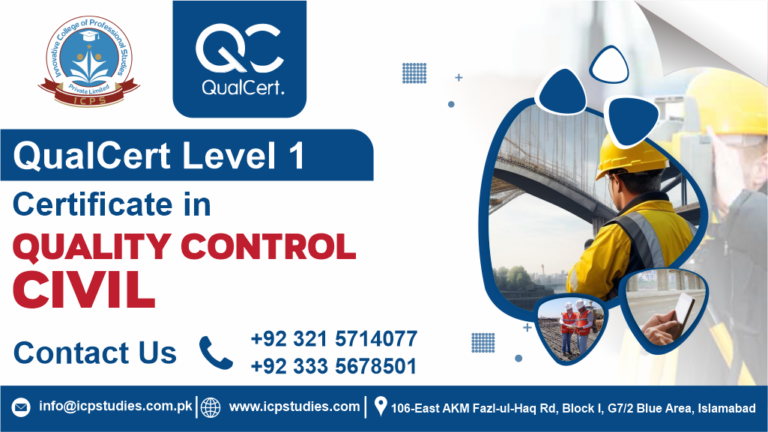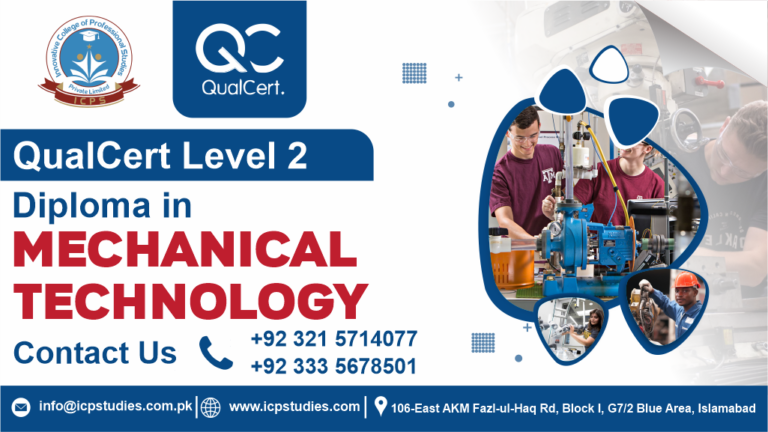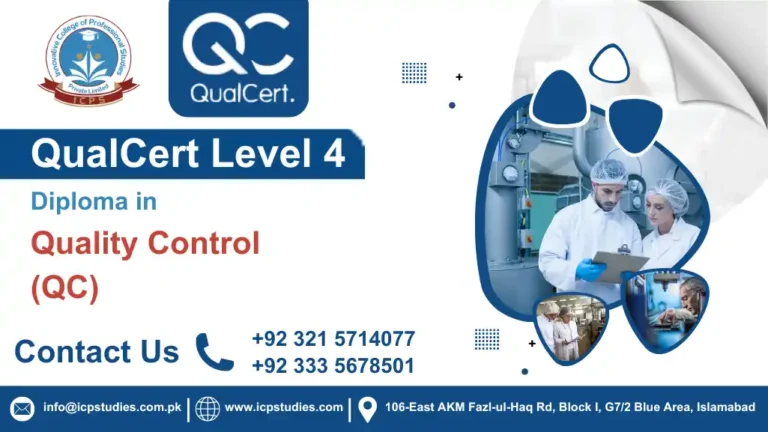The QualCert ISO 13855:2010 Safety of Machinery course offers a comprehensive understanding of the safety standards for machinery in various industrial environments. As a UK-based certification, this qualification provides professionals with the necessary skills to ensure the safe design, installation, and operation of machinery in compliance with international safety standards. Through an assignment-based learning approach, this course is designed to be flexible, allowing you to complete it at your own pace while gaining practical knowledge that is globally recognized and accepted.
The QualCert ISO 13855:2010 Safety of Machinery course provides an in-depth understanding of the internationally recognized safety standards for machinery. ISO 13855:2010 specifies the safety requirements for the positioning of protective equipment and safety-related parts of machinery, ensuring the protection of workers and operators from potential hazards.
The QualCert ISO 13855:2010 Safety of Machinery course provides invaluable knowledge and certification for professionals working with machinery and safety systems. Whether you’re a machinery designer, safety officer, or quality assurance professional, this course will ensure you are equipped to meet global safety standards, mitigate risks, and maintain a safe work environment. By completing this assignment-based course, you will gain a globally recognized certification that can significantly enhance your career prospects and help you contribute to safer workplaces worldwide.
Enroll today to take the first step towards advancing your expertise in machinery safety and compliance!
All About QualCert ISO 13855:2010 Safety of Machinery
Course Overview
The QualCert ISO 13855:2010 Safety of Machinery course is a comprehensive, UK-based certification designed for professionals who are involved in ensuring the safety of machinery in industrial settings. This assignment-based certification is globally accepted, offering you the skills and knowledge necessary to comply with ISO 13855:2010 standards, which outline the requirements for the safe positioning and layout of protective equipment and safety measures for machinery.
ISO 13855:2010 focuses on minimizing risks related to machinery and ensuring the safety of operators and workers by setting guidelines for the correct positioning of safety devices, barriers, and other protective systems. This course will guide you through these principles, providing the tools needed to enhance workplace safety, meet regulatory standards, and avoid hazards associated with machinery.
Whether you’re an engineer, safety officer, or quality assurance professional, this course will help you develop a strong understanding of machinery safety protocols. By completing this certification, you will not only expand your career prospects but also ensure your workplace adheres to international safety standards, contributing to a safer, more efficient working environment.
Study Units
- QualCert ISO 13855:2010 Safety of Machinery
- Introduction to Machinery Safety and Risk Assessment
- Safety Devices and Control Systems
- Implementation of Protective Measures
- Compliance with ISO 13855 Standards
- Applicants are required to have a high school diploma or an equivalent qualification.
- A background in engineering, technology, or a related field is preferred, although not mandatory.
English Language Proficiency:
- Proficiency in English is essential to successfully complete the course, as all materials and assessments are conducted in English.
Prerequisite Knowledge:
- A basic understanding of machinery safety principles and terminology is recommended.
- Familiarity with engineering concepts, including risk assessment and machinery design, will be beneficial but is not required.
Technical Skills:
- Applicants should have basic computer skills, including proficiency in Microsoft Office applications.
- Familiarity with CAD software and machinery design tools may be advantageous but is not a requirement for the course.
Health and Safety Considerations:
- Given the practical aspects of the course, applicants should be physically capable of participating in hands-on activities safely.
- If any health conditions could impact participation in practical exercises, applicants should provide relevant medical clearance.
Work Experience:
- While not a prerequisite, relevant work experience in engineering, manufacturing, or occupational safety is highly beneficial.
- Work experience can provide practical insights, enhancing the understanding and application of course concepts.
Age Requirements:
- Applicants must meet the minimum age requirement set by the institution offering the course, which is typically 18 years or older, although this may vary by institution.
Whether you are directly involved in machinery operation, safety management, regulatory compliance, or simply looking to enhance workplace safety, this course equips you with the knowledge and skills to effectively understand, implement, and optimize safeguard positioning for machinery safety.
The QualCert ISO 13855:2010 Safety of Machinery course is designed for a wide range of professionals who are involved in machinery safety, risk management, design, and operations. It is ideal for individuals who want to deepen their understanding of machinery safety standards and ensure compliance with international safety regulations. Specifically, this course is suitable for:
- Machinery Designers and Engineers
- If you’re responsible for designing machinery or equipment, this course will provide you with the knowledge needed to incorporate safety measures into your designs and ensure compliance with ISO 13855:2010.
- Health and Safety Managers
- If you’re overseeing health and safety protocols in your workplace, this course will give you the tools to assess, implement, and verify safeguard positioning and machinery safety measures to protect workers and prevent accidents.
- Maintenance Technicians and Engineers
- For those maintaining machinery, this course offers key insights into safeguard positioning, enabling you to ensure that equipment remains compliant with safety standards and minimizing the risk of injury.
- Risk Assessment Specialists
- If you specialize in conducting risk assessments and managing potential hazards, this course will equip you with the skills to assess machinery safety and optimize safeguard positioning to minimize risk.
- Quality Assurance Professionals
- For those involved in ensuring product and process safety, this course provides the understanding necessary to evaluate machinery and safeguard systems, ensuring compliance with ISO safety standards.
- Industrial Managers
- If you are managing machinery operations or overseeing teams involved in production or machinery maintenance, this course will give you the knowledge to enhance safety, reduce risks, and comply with industry regulations.
- Manufacturing Supervisors
- Supervisors in manufacturing environments can benefit from this course to ensure that machinery is properly safeguarded, minimizing accidents and ensuring workers are operating in a safe environment.
- Occupational Health and Safety Consultants
- If you’re a consultant advising businesses on machinery safety, risk management, and compliance, this course will further enhance your credibility and knowledge in implementing ISO 13855:2010 standards.
- Anyone New to Machinery Safety
- If you’re entering the field of machinery safety or industrial operations, this course will provide you with the foundational knowledge necessary to begin working safely with machinery and comply with international safety standards.
This course is ideal for anyone aiming to advance their career in machinery safety, risk management, or industrial operations, or those looking to enhance workplace safety and reduce risks associated with machinery. Whether you’re just starting out or looking to build upon your existing knowledge, QualCert ISO 13855:2010 provides valuable skills that will help you stay compliant, safe, and efficient.
Learning Outcomes
Unit 1: Introduction to Machinery Safety Standards
- Understand the significance of international machinery safety standards and their role in safeguarding workers.
- Explain the key objectives and importance of ISO 13855:2010 in ensuring machinery safety.
- Explore the historical development of safeguard positioning regulations and their evolution over time.
Unit 2: Approach Speeds of Human Body Parts
- Define the approach speeds of various human body parts as they interact with hazardous machinery areas.
- Identify the factors that influence approach speeds, including task requirements, human behavior, and environmental conditions.
- Examine case studies that highlight the critical importance of factoring in approach speeds when determining safeguard placement.
Unit 3: Principles of Safeguard Positioning
- Apply the core principles for determining optimal safeguard placement relative to hazardous machinery zones.
- Learn how to calculate safety distances based on approach speeds and human response times to ensure adequate protection.
- Implement safeguard positioning strategies across a variety of industrial environments to minimize risks and enhance safety.
Unit 4: Risk Assessment and Mitigation
- Conduct thorough risk assessments to identify potential hazards and evaluate risks associated with machinery operation.
- Determine the appropriate level of safeguarding required based on human approach speeds and other relevant risk factors.
- Develop risk mitigation strategies through effective safeguard positioning to reduce workplace accidents and injuries.
Unit 5: Compliance and Verification
- Understand how to verify compliance with safeguard positioning guidelines using testing, measurement, or simulation techniques.
- Learn how to properly document safeguarding assessments in accordance with ISO 13855:2010 standards.
- Develop strategies for maintaining ongoing compliance and ensuring that safeguard positioning meets regulatory standards.
Unit 6: Integration with Machinery Design
- Learn how to integrate safeguard positioning considerations into the design and development process of machinery.
- Collaborate effectively with design teams to incorporate safeguard positioning principles from the initial design phase.
- Analyze how safeguard positioning impacts machinery performance, efficiency, and overall user-friendliness.
Unit 7: Practical Applications and Case Studies
- Apply the principles of safeguard positioning to practical machinery scenarios in real-world industrial settings.
- Analyze case studies of machinery-related accidents and understand how proper safeguard positioning could have prevented injuries.
- Develop strategies for implementing safeguard positioning standards in diverse industrial environments to improve workplace safety.
Unit 8: Maintenance and Continuous Improvement
- Learn to implement maintenance procedures that ensure ongoing compliance with safeguard positioning standards.
- Continuously enhance safeguard positioning practices based on feedback, industry advancements, and lessons learned.
- Conduct routine inspections and preventive maintenance to address potential risks associated with safeguard positioning.
Unit 9: Training and Education
- Develop training programs to educate employees on the importance of safeguard positioning in machinery safety.
- Enhance awareness and understanding of safeguard principles through comprehensive training initiatives.
- Evaluate the effectiveness of training programs in improving machinery safety outcomes and reducing workplace accidents.
Whether you are directly involved in machinery operation, safety management, regulatory compliance, or looking to improve workplace safety practices, this course offers valuable insights and practical skills to effectively implement and optimize safeguard positioning for machinery safety in accordance with ISO 13855:2010.
FAQs QualCert ISO 13855:2010 Safety of Machinery







